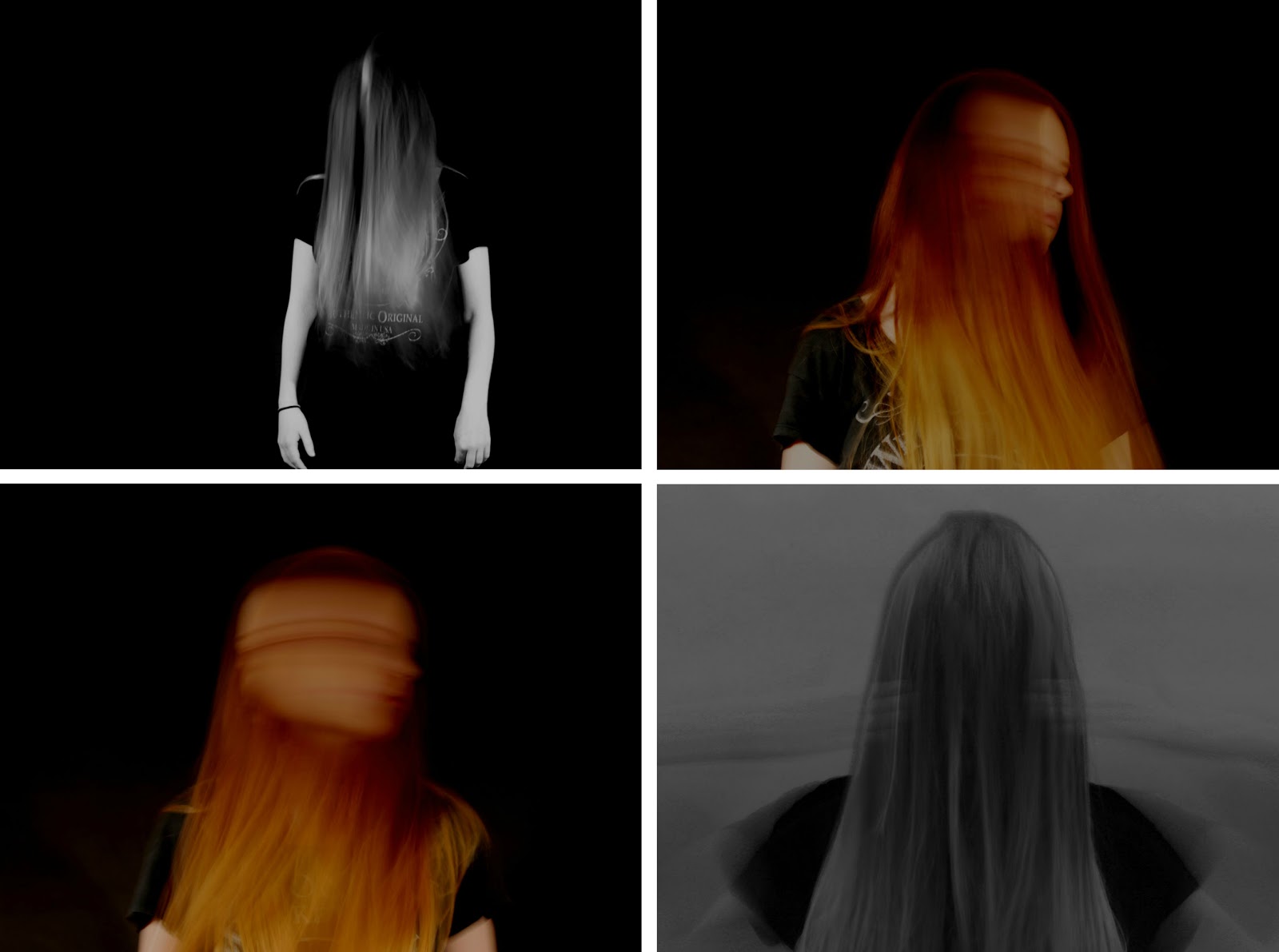Inspired by Marilyn Manson's use of bright, overexposed shots in his, "I don't like the drugs", music video. I decided to try experimenting with overexposing photographs, whilst also experimenting with looking for and adding texture and capturing movement and anonymity. I created these overexposed shots, by making sure more light than needed to, would enter my lens whilst exposing an image. I did this by opening my shutter for longer and putting my camera on a tripod as well in some cases, I also used a lower aperture to let more light in through the lens and used an ISO of 200, so that my images would have a good amount of quality without noise whilst also being relatively bright. I took these photographs around my house and my method was to simply look for interesting shapes and also use myself, to create some more haunting, faceless photographs.
I experimented a lot with placing objects over my face, that were very light so that they would wash out any detail over my face, creating this surreal effect where you can just see the rest of my body and hair. I really liked this photograph in particular, however I personally found the whiter areas to be too smooth and bright, which is why I've lowered the brightness in all my images to bring more detail back into the darker areas. I have also added a grainy texture to this image, which I think really adds to this photograph and communicates the same effect as a lot of the visuals in the Manson video and also the cursed tape I looked at from The Ring, in terms of this haunting use of texture and colours such as white noise.
What I love about this overexposed effect is the amount of negative space it can create, in what would normally be a very busy and detailed image. The image above for example, that I took by pointing my camera at a piece of metal, creates this really abstract reflection of me holding my camera and this bright, negative space looks very surreal in suspending this reflection within the image. I think the rule of thirds is also used effectively in this image, as I don't think having this reflection exactly in the middle would have done anything visually for this image and it would not have allowed the viewer's eye to view across the image as their attention will have just been drawn straight to middle. I also think this works because my intention with this image was not to simply take a photograph, of myself taking a photograph, but to create an abstraction using this effect of overexposing a photograph.
For the image above, I decided to move my camera as I took the photograph, so that the round shapes on my subject matter which was a radiator, would blend and look like they are moving in the image. I think doing this was effective in creating something very smooth in texture and surreal looking, as I don't think a lot of people would instantly know this is a radiator. I also framed my subject matter on the bottom left of the image, cropping a lot of it out, because I really like the negative space around it and I think this framing is interesting in challenging the scale of this object and what it actually is for a viewer, working on this whole idea of the abstraction that I can create within a still life photograph.
After experimenting with hair previously, inspired by stills from The Ring, I decided to look at hair once again and experimented with what other abstractions I could create, simply using the hair on my head. I experimented in particular with movement and framing in an attempt to create some very surreal looking effects using longer shutter speeds, to capture movement in my image as well as overexposing it. I also decided not to include my face in anyway, in order to create some strange shapes rather than anything particularly emotive.
This image is one of my favourite results of my experiments with hair and movement, as it just looks so strange and almost like some kind of unworldly creature swimming, through this white space. I also like the varying tones throughout the image, that really add an atmospheric sense of depth to this image, despite everything looking so soft and blending seamlessly into this negative space.
I also experimented with these thick black wires in some of my images, as I love the deep black contrast they add, to an otherwise white and bright image. By bleaching all the other textures and tones mostly out of the image they really look bizarre hanging in and out of the images, in a very intimidating way.
Overall I'm really happy with these experiments. that I have simply gone around my house and taken. I'd love to display some of these images along with my final piece, as I think they have such an emotive mood to them, despite being simple abstractions and really represent a lot of the work and ideas, I have looked at in this project so far, in terms of distortion, black and white and abstraction in general to communicate something very conceptual. I now want to look more at white noise and how I can make a comment on things such as mass media and technology in my work, as I've looked at a lot of work now to do with those themes and definitely would like to work to apply them into my own final images, maybe incorporating these techniques of distortion and overexposing images as well.


















































